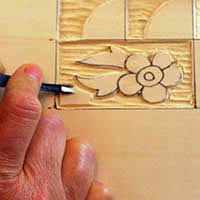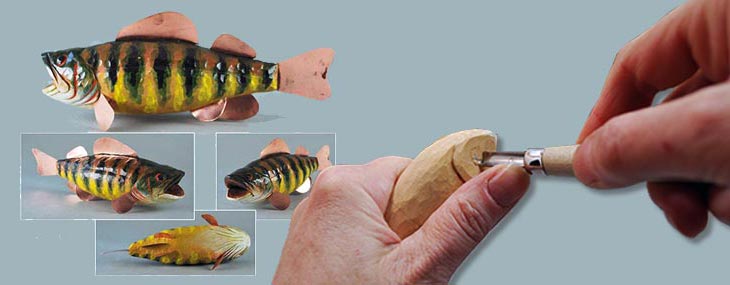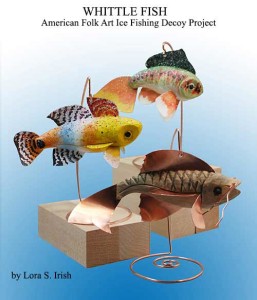Wood Carving Celtic Dragon 1
Beginner Level Wood Carving Project
This quick, easy, and fun Celtic Dragon pattern is perfect for your first endeavor into relief wood carving. It uses a very basic set of carving tools, a bench knife, and a pre-routed basswood plaque. Your dragon carving can be completed in just one weekend.
Over the next several days I will be posting all of the step you need to create your own Celtic knot relief carving project. Please bookmark our blog so that you don’t miss any of the fun. I hope that you will share this link on your favorite wood carving forum or message board.
Please take a moment and download our free PDF e-book, Your First Carving. This is an in-depth look at the woods, tools, terminology, and techniques used in relief wood carving, written and shared by Lora S Irish.
Wood Carving Celtic Dragon 1
Wood Carving Celtic Dragon 2
Wood Carving Celtic Dragon 3
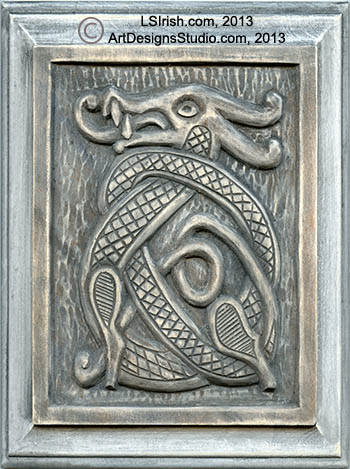 Supply List:
Supply List:
8” x 10” x 3/4” (203 x 254 x 19mm) router-edged basswood plaque
Bench knife
Large and small round gouges
Wide sweep round gouge
V-gouge
Straight chisel
U-gouge
Sharpening tools and strop
220-grit sandpaper
Graphite tracing paper
Painter’s tape
Pencil
Ruler and/or compass
Soft, clean cloth
Stiff toothbrush or brass wire brush
Thick terry cloth towel or non-slip mat
Depth Gauge
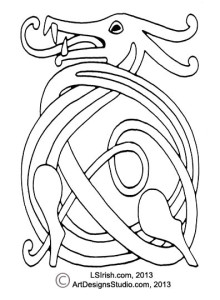 Preparation of the carving board
Preparation of the carving board
1. Most of the supplies used in this project can be obtained online at your favorite wood carving supply house, through Amazon.com, or at your local large craft store. The sandpaper, painter’s tape, ruler, compass, and brass wire brush are available through most hardware stores.
2. Using 220-grit sandpaper lightly sand your plaque, working the sandpaper with the grain of the wood. Avoid sanding against the grain or in circular swirl strokes. This will leave fine scratches that can appear during the painting and staining steps.
3. Sand again using 320-grit sandpaper. Remove all of the sanding dust using a dry, clean cloth.
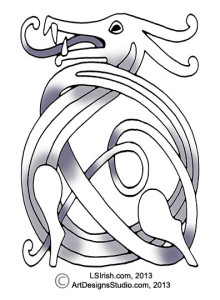 Transferring your Pattern
Transferring your Pattern
Click on the pattern images to the right and save a copy to your Desktop. Print one copy of each pattern – the outline tracing pattern and the shaded contour pattern.
Center the pattern to the board, secure one side using painter’s tape. Slide a sheet of graphite paper under the pattern paper with the graphite side against the wood. Using an ink pen and light hand pressure trace along the outer boundary lines of each element of the dragon. Remove the pattern and graphite papers.
Learn more about how to work with your patterns and tracing.
 Gather your wood carving supplies
Gather your wood carving supplies
For this carving I am using a nice quality Japanese carving tools set which includes a large round gouge, small round gouge, straight chisel, skew chisel, and v-gouge. Carving tool sets can cost between $25 per set up to several hundred dollars. I strongly advise any beginner to start with an inexpensive tool set while you discover which style of wood carving will be your favorite.
Learn more about creating a basic wood carving tool kit.
Suggested tool list at Amazon.com :
Ramelson 6 Piece Palm Set Tools, 1/8″ to 1/4″ Profile
Raemlson 6 Piece Long Handle Beginners Carving Tools
Flexcut 3 Knife Starter Set
FLEXCUT Carving Kit – 5 Piece
FLEXCUT Carving Kit – 11 Piece
Flexcut Slipstrop
Power Grip Carving Tools, Seven Piece Set
Walnut Hollow 8-Inch by 10-Inch Basswood Rectangle Plaque
Walnut Hollow 8″ by 10″ Basswood French Corner Wide Edge Plaque
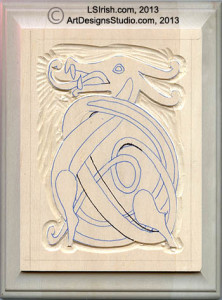 Cutting the background area
Cutting the background area
1. Mark a 1/4″ margin using a pencil and ruler along the outer raised carving area of your plaque. This 1/4″ area will remain uncarved, at the original level of the wood. During the next two steps treat this margin line as if it were a boundary line to your pattern.
2. This project begins with dropping the background area of the plaque to free the dragon pattern for carving. With a bench knife or large chip carving knife, cut along the outer boundary lines of the dragon pattern. Hold the knife vertical to the wood and slowly pull along the tracing line. Stop cuts are made in several shallow cuts instead on one deep lunge of t he knife tip.
3. Using the small or large round gouge, rougehout the background. Lay the center of the gouge about 1/2″ to 1″ from the stop cut tracing line. Glide the gouge into the stop cut. This will release a small chip of wood.
 4. The rough-out stage may take several layers of round gouge cutting. As you deepen your background re-cut the stop cut along the outer pattern line to slowly drop the straight-edged wall along the dragon. My final layer of round gouge cuts was worked with the grain (vertical to the plaque) to set all of the carving strokes in one direction. More about Background treatments for your relief wood carving.
4. The rough-out stage may take several layers of round gouge cutting. As you deepen your background re-cut the stop cut along the outer pattern line to slowly drop the straight-edged wall along the dragon. My final layer of round gouge cuts was worked with the grain (vertical to the plaque) to set all of the carving strokes in one direction. More about Background treatments for your relief wood carving.
Determining the depth of your relief carving
The depth of your carved background and carved design is determined by how thick your carving board is. As a general rule the carving is cut to approximately 1/2 the depth or thickness of the wood at the deepest point. For a 3/4″ board this makes the background drop about 3/8″ deep. More about Determining the depth of a carving.
Please join me tomorrow, November 16, 2013, as we work through the shaping and contour steps for this Celtic Dragon Knot pattern. Thank you, Lora Irish
Wood Carving Celtic Dragon 1 Read More »



